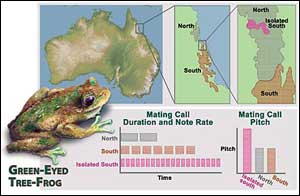Veteran CU-Boulder scientist on camera team
University of Colorado at Boulder planetary scientist Larry Esposito, a member of the European Space Agency’s Venus Express science team, believes the upcoming mission to Earth’s “evil twin” planet should be full of surprises.
While its 875-degree F. surface is hot enough to make rocks glow and its atmosphere is filled with noxious carbon dioxide gases and acid rain, Venus actually is more Earth-like than Mars, said Esposito,
Scientists aboard pioneering icebreaking ships investigate ocean conditions in unexplored region to better understand Arctic’s role in global climate change
Two ships taking part in a recently completed research voyage investigating the oceanography, marine geology, geophysics and ice cover of the Arctic Ocean have become the first surface vessels to traverse the Canada Basin, the ice-covered sea between Alaska and the North Pole.
The Swedish vessel Oden and the
IODP Expedition 311 returns to port with core samples
An international team of scientists supported by the Integrated Ocean Drilling Program (IODP) has completed a unique research expedition aimed at recovering samples of gas hydrate, an ice-like substance hidden beneath the seafloor off Canada’s western coast. Gas hydrate, a mixture of water and mostly methane, is believed to occur under the world’s oceans in great abundance, but it quickly “melts” once removed from the h
Petroleum exploration tool may have new use in hurricane study
In 2004 and now in 2005, the hurricane seasons have been horrifyingly intense – so how bad is the long-range forecast? Based on a century of data, meteorologists currently believe that a 30-year lull in hurricane activity is over and we are at the beginning of a new multi-decade period of larger and more frequent storms. However, there is other data that suggests we may also be coming to the end of a thousand year peri

Picky female frogs in a tiny rainforest outpost of Australia have driven the evolution of a new species in 8,000 years or less, according to scientists from the University of Queensland, the University of California, Berkeley, and the Queensland Parks and Wildlife Service.
“That’s lightning-fast,” said co-author Craig Moritz, professor of integrative biology at UC Berkeley and director of the Museum of Vertebrate Zoology. “To find a recently evolved species like this is excep
As Hurricane Wilma barrels towards the Florida coast, a last-minute acquisition by a unique instrument aboard ERS-2 is helping strengthen weather forecasters’ final predictions of its future course and strength.
The ERS-2 radar scatterometer data shown here was acquired by the satellite on 04:30 UTC this morning (06:30 CEST), then relayed via the ground station of the Center for Southeastern Tropical Advanced Remote Sensing (CSTARS) at the University of Miami to be speedily p